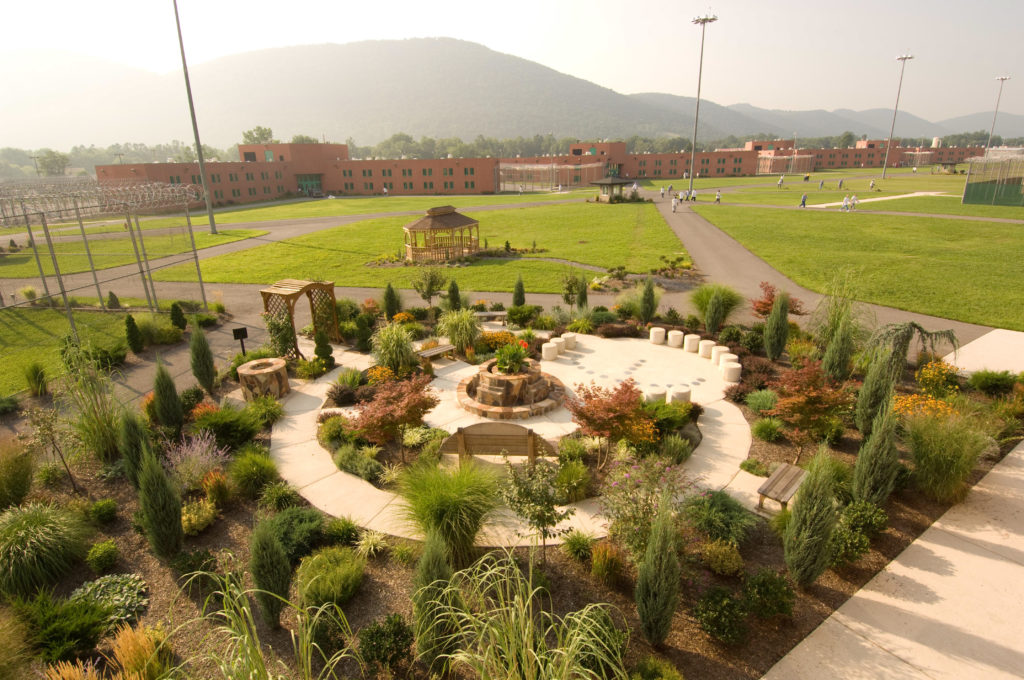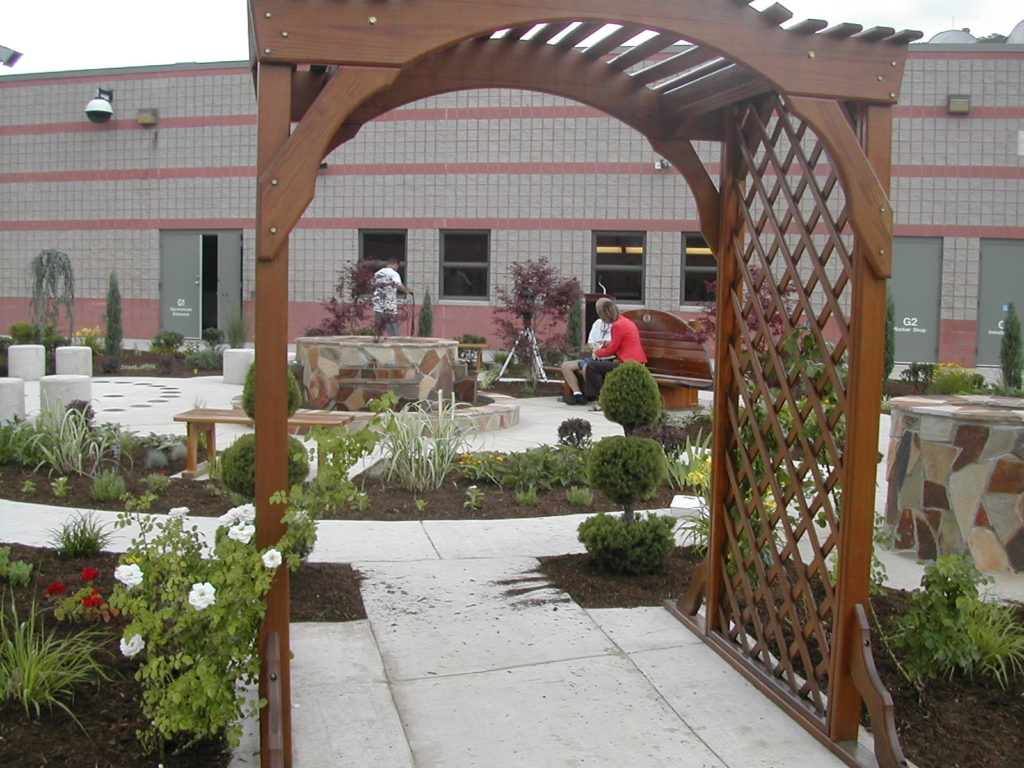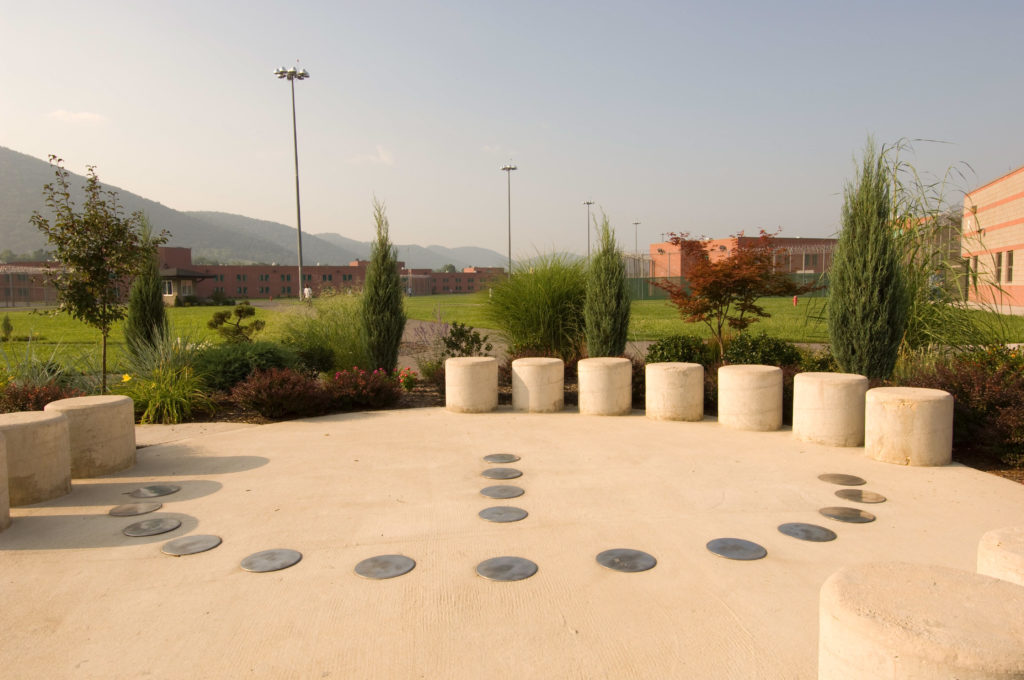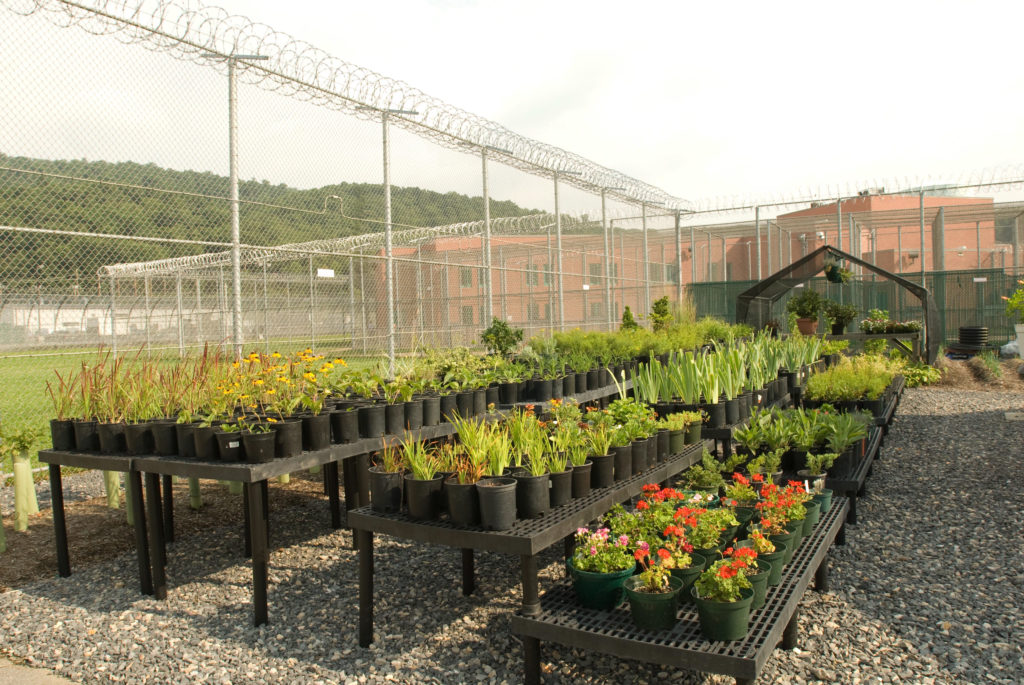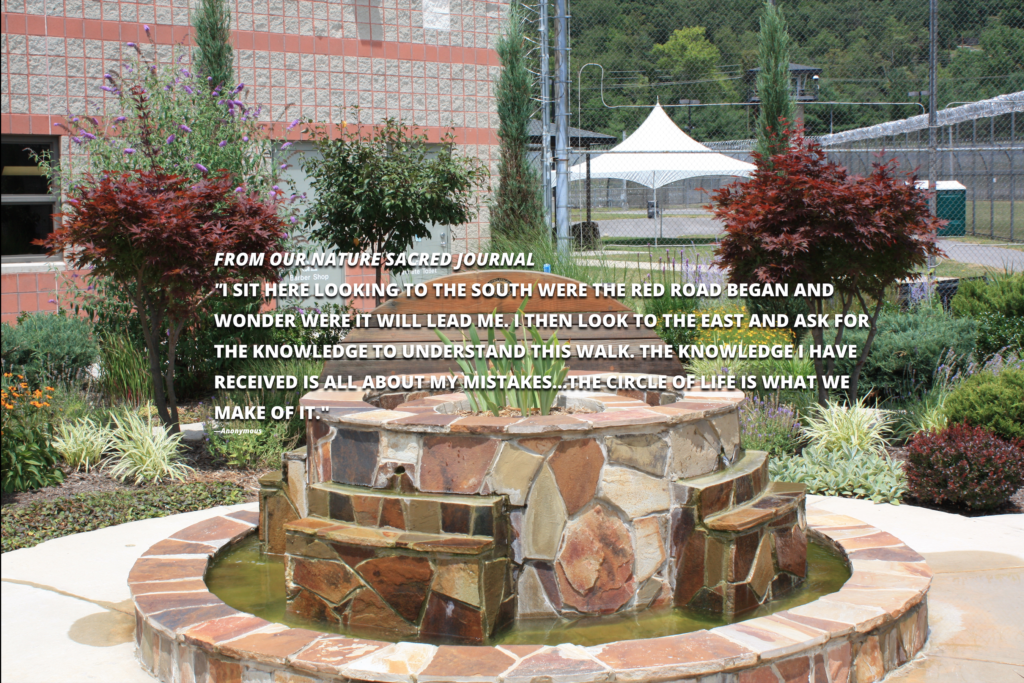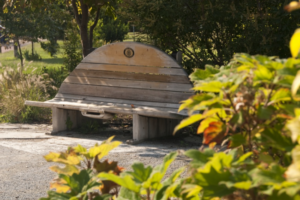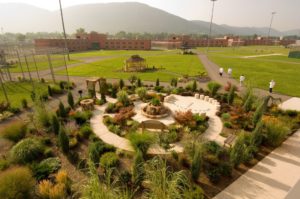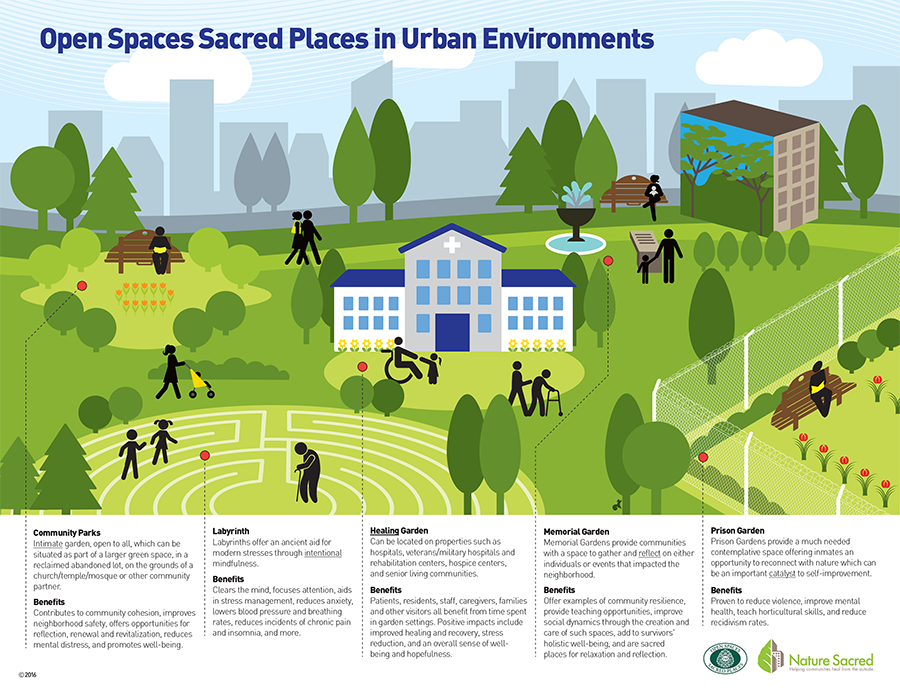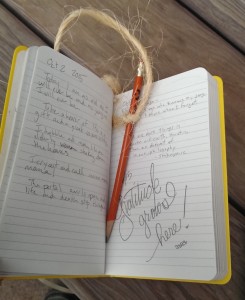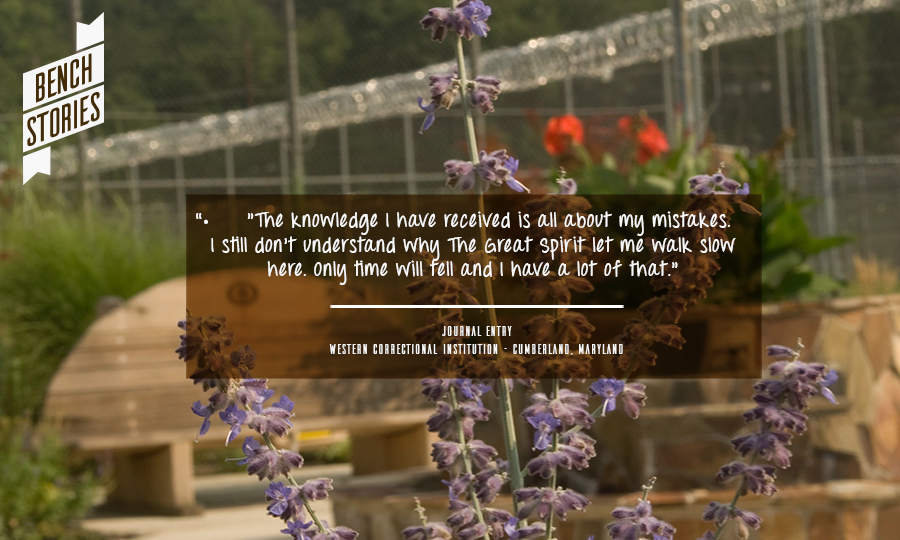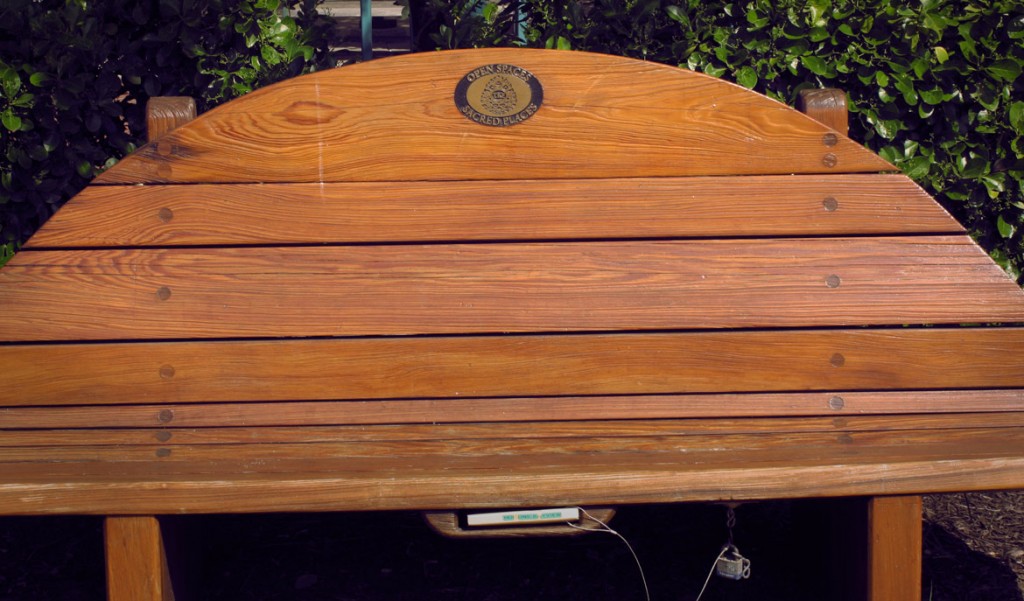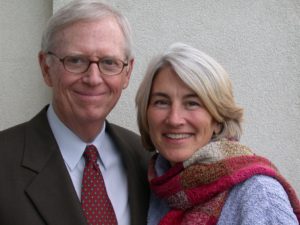About this Sacred Place
Our country has the highest imprisonment rate of any other nation worldwide. There are more than 2.2 million people in prison. And the US Department of Justice estimates that over two-thirds of released prisoners will be incarcerated again within three years. When Jon Galley became warden at Western Correctional Institution (WCI) in Cumberland, Maryland, his goal was to focus on wellbeing and working outside in nature, and introduce a new set of physical and mental skills. His hope: the facility’s inmates would never return once released.
Jon knew about nature’s healing qualities. One of his first projects was beautifying the grounds. The inmates, part of a new Master Gardener program, had full creative rein to design, choose plantings and plant the beds: a big change for many inmates who came from places filled with concrete and blacktop and had never before pushed a lawnmower or used a rake. The program was immensely successful. That’s where Nature Sacred came in. We proposed including a meditation garden to expand upon the idea of nature giving new meaning to the inmates’ lives.
Once they thought about a meditation garden, the need was evident. While inmates are isolated from the world outside the prison walls, they’re never alone within those walls. They can’t leave to attend funerals of loved ones or join in joyous family occasions, such as weddings and graduations. And there was no place on prison grounds for solitude, no quiet space to contemplate, celebrate or grieve.
It was critical for the space to reflect what was meaningful to the inmates. It had to be open and accessible, in this closed environment of physical and psychological walls. The first image inmates conceptualized was a circle. That became the garden’s shape. The second image was water, with a tree in the center of a well, out of which flowed water in all directions. This became the garden’s center garden. To the side, inmates drop private notes into a Well of Unspoken Truths, a smaller masonry well 20 feet deep with a small slot at the top. A large sundial is embedded into the ground, big enough for a person to stand on and cast a shadow that tells time. It allows an inmate to connect to a time before he was in prison and to a time when he will be out, giving hope. On the portal, red roses climb up one side, symbolizing a constant struggle with violence, and white roses up the other, symbolizing a hope for peace.
Gardens are about growth and renewal. This Meditation Garden at WCI embodies those concepts in many forms, encouraging inmates to look within and beyond—from the tree at the center of the well and the masonry Well of Unspoken Truths, to the human sundial and arbor of roses portal.

